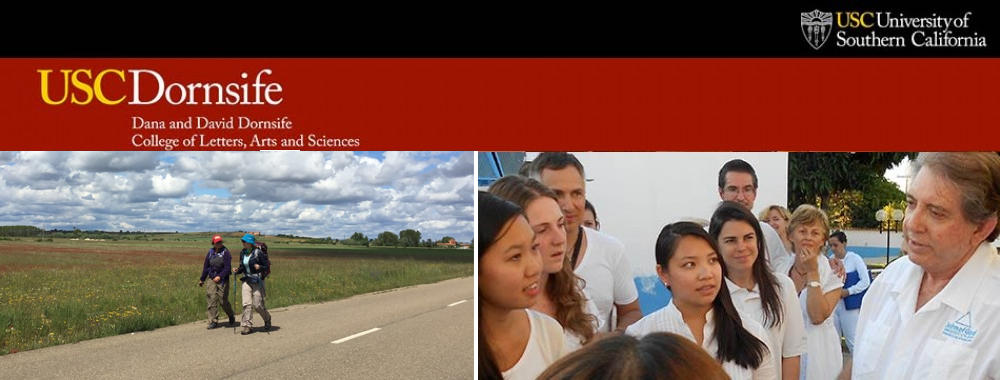
Pilgrim mass in the chapel at the end of the Camino
Alan Morinis differentiates pilgrim motives into six typologies: Initiative, devotional, instrumental, normative, obligatory, and wandering. Although these typologies once seemed far away from me when we first learned them, I saw a few come to life as I heard others’ stories on my Camino.
The first I observed was initiative. Morinis describes this typology as someone who walks a pilgrimage to discover personal transformation rather than for religious reasons. I met a 45-year-old German woman, who was a self-employed holistic healer. She had done this work for more than 15 years and just discontinued her practice before beginning the Camino. She told me that she was walking to find new direction in her life, both career-wise and for personal growth. She was on a quest to initiate a new vision for herself.
The second typology I encountered was devotional, which describes someone whose goal is to encounter and honor spiritual divinities and symbols. A young woman in a group of Catholic students I met told me about how much she enjoyed the beautiful cathedrals with traditional Catholic symbols and how excited she was to finally arrive at the cathedral in Santiago, not only because her feet hurt, but also because she wanted to experience the mass there. Her excitement around observing and participating Catholic spaces and rituals displays her motives as largely devotional.
Morinis describes instrumental motives as ones looking to accomplish worldly goals. I met an Irish man around 60 years old, who told me that he is walking to pray for his children’s futures. For his daughter, who now has a stable job, he is praying for her success in settling down. For his son, who just finished his undergraduate exams, he is praying for academic and career success. This man I spoke to is using his pilgrimage as a mechanism to attain a physical goal, making his purposes instrumental.
The fourth typology that I observed was normative. A normative pilgrimage is one that occurs as a ritual cycle. In a group sharing session, there was an older couple who shared that they have walked segments of the Camino every year for five years during the summer because of their work schedules. In this way, walking the Camino became a normal part of their yearly cycle.
Although there are most likely people who walk the Camino with the last two motives, obligatory and wandering, I did not encounter them personally. From the stories I heard, it seems that pilgrims do not walk this pilgrimage as a punishment or penance as they used to during Medieval times. Pilgrims’ decisions to walk is more self-authorized now. As for the wandering typology, which means walking with no predetermined goal, every pilgrim I have spoken to has set out with the goal of arriving at Santiago or Finisterre. Inherently, this gives each of them a goal to look forward to, discounting them from walking with a wandering motive. In the modern age, wrought with calculated schedules and seemingly always limited time, people may feel that traveling so far to walk the Camino must have a guaranteed goal of arriving at a final destination.
Having listened to the numerous stories of pilgrims I’ve met during my Camino, I have realized that rather than separating us, our unique reasons for being here bring us closer together as we support one another in our various stages of life.
